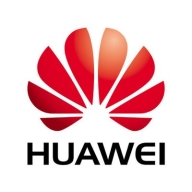

Cisco Meraki and Huawei Wireless compete in the network management category. Cisco Meraki often holds the upper hand due to its integrated cloud management and seamless user interface.
Features: Cisco Meraki offers centralized cloud management, Layer 7 security, and in-depth analytics, which make it ideal for ease of deployment and comprehensive network visibility. Huawei Wireless is known for its cost-effectiveness with advanced WiFi 6 technology, offering strong performance and broad coverage.
Room for Improvement: Cisco Meraki needs enhancements in its licensing model, additional customization, and better third-party integration. Huawei Wireless could improve its offerings for SMBs and refine its after-sales support to cater to smaller organizations.
Ease of Deployment and Customer Service: Cisco Meraki enables flexible deployment across various cloud environments, praised for its documentation and round-the-clock support. Huawei Wireless is generally on-premises, known for its lower complexity and competitive pricing but lacks cloud deployment flexibility.
Pricing and ROI: Cisco Meraki's subscription-based model is more expensive but offers rich features and a favorable ROI through efficient management. Huawei Wireless presents a budget-friendly option with competitive pricing, providing excellent cost-effectiveness but potentially fewer enterprise-level features.
| Product | Market Share (%) |
|---|---|
| Cisco Meraki Wireless LAN | 11.5% |
| Huawei Wireless | 6.3% |
| Other | 82.2% |


| Company Size | Count |
|---|---|
| Small Business | 68 |
| Midsize Enterprise | 26 |
| Large Enterprise | 31 |
| Company Size | Count |
|---|---|
| Small Business | 17 |
| Midsize Enterprise | 8 |
| Large Enterprise | 12 |
We monitor all Wireless LAN reviews to prevent fraudulent reviews and keep review quality high. We do not post reviews by company employees or direct competitors. We validate each review for authenticity via cross-reference with LinkedIn, and personal follow-up with the reviewer when necessary.